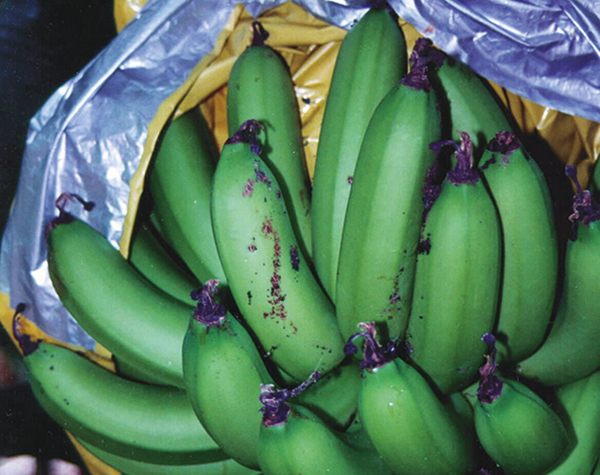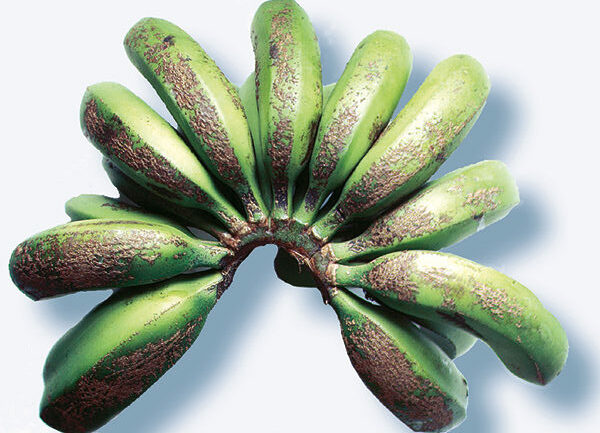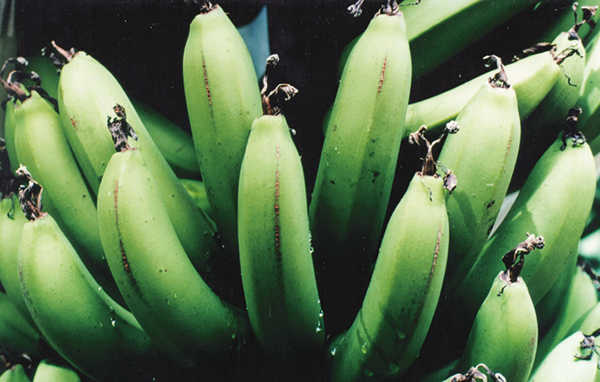Scabs on fruit

Scab moth
Cause: Larvae of Nacoleia octasema feeding on the fruit between the bunch stalk and the hand. Only occurs from bunch emergence to bract fall.
Solution: Newly emerged bells require pesticide injection while they are still upright. When the plants are growing quickly during summer, treat blocks at least weekly.

Sugarcane bud moth
Cause: Small grey larvae of Opogona glycyphaga. They feed and pupate mainly towards the tips of the fingers and where the flower end of a lower finger meets a finger in the hand above.
Solution: This pest lays its eggs on fruit after all the bracts have fallen. Treat bunches with insecticide during bunch covering.

Banana fruit caterpillar
Cause: Larvae of Tiracola plagiata feeding on leaves and fruit. Damage is usually confined to a few bunches and feeding on fruit is confined to the outside of fingers.
Solution: Although attack to a single bunch can be very severe, only a few bunches are damaged and specific treatments are not usually needed. Standard treatments for rust thrips and sugarcane bud moth help to control fruit caterpillar. If damage is noted on more than 5% of bunches, treat with a pesticide.

Corky scab
Cause: Scarring from feeding and egg-laying by flower thrips, Thrips hawaiiensis on young fruit when still covered by the bracts.
Solution: Insecticide injection at bell emergence for control of scab moth also controls flower thrips.

